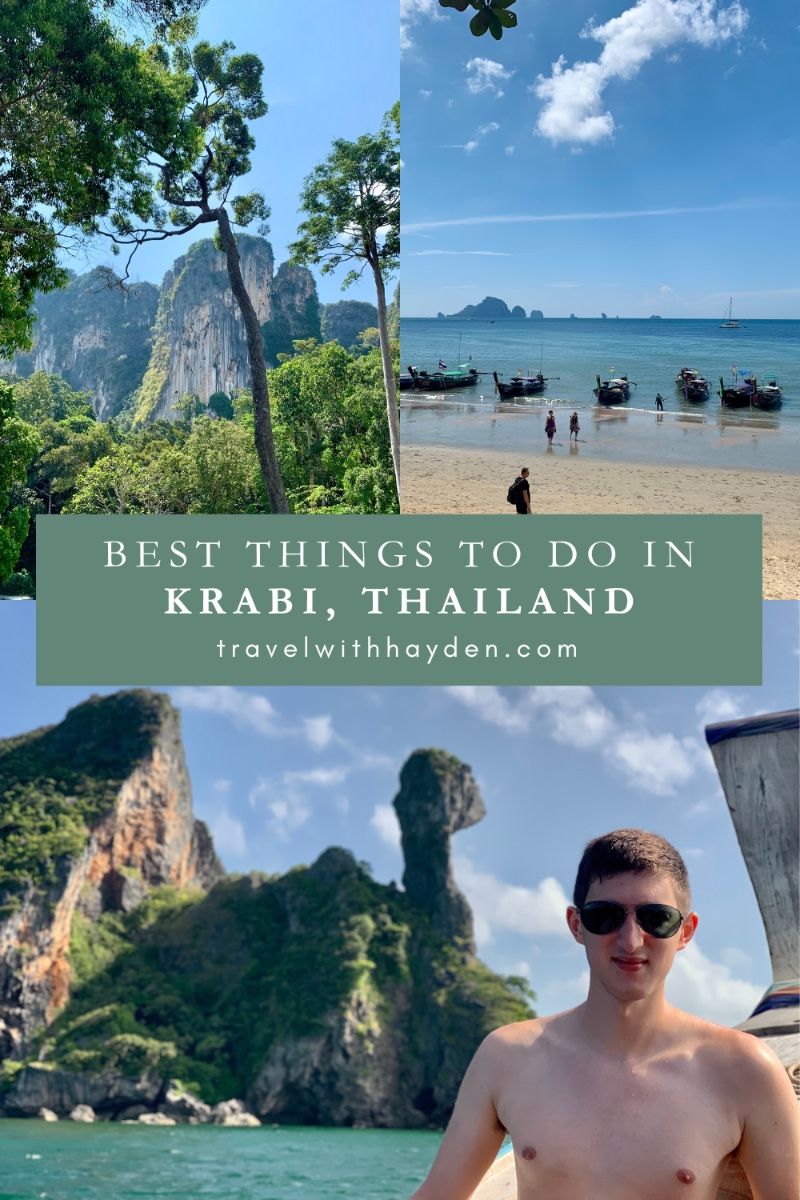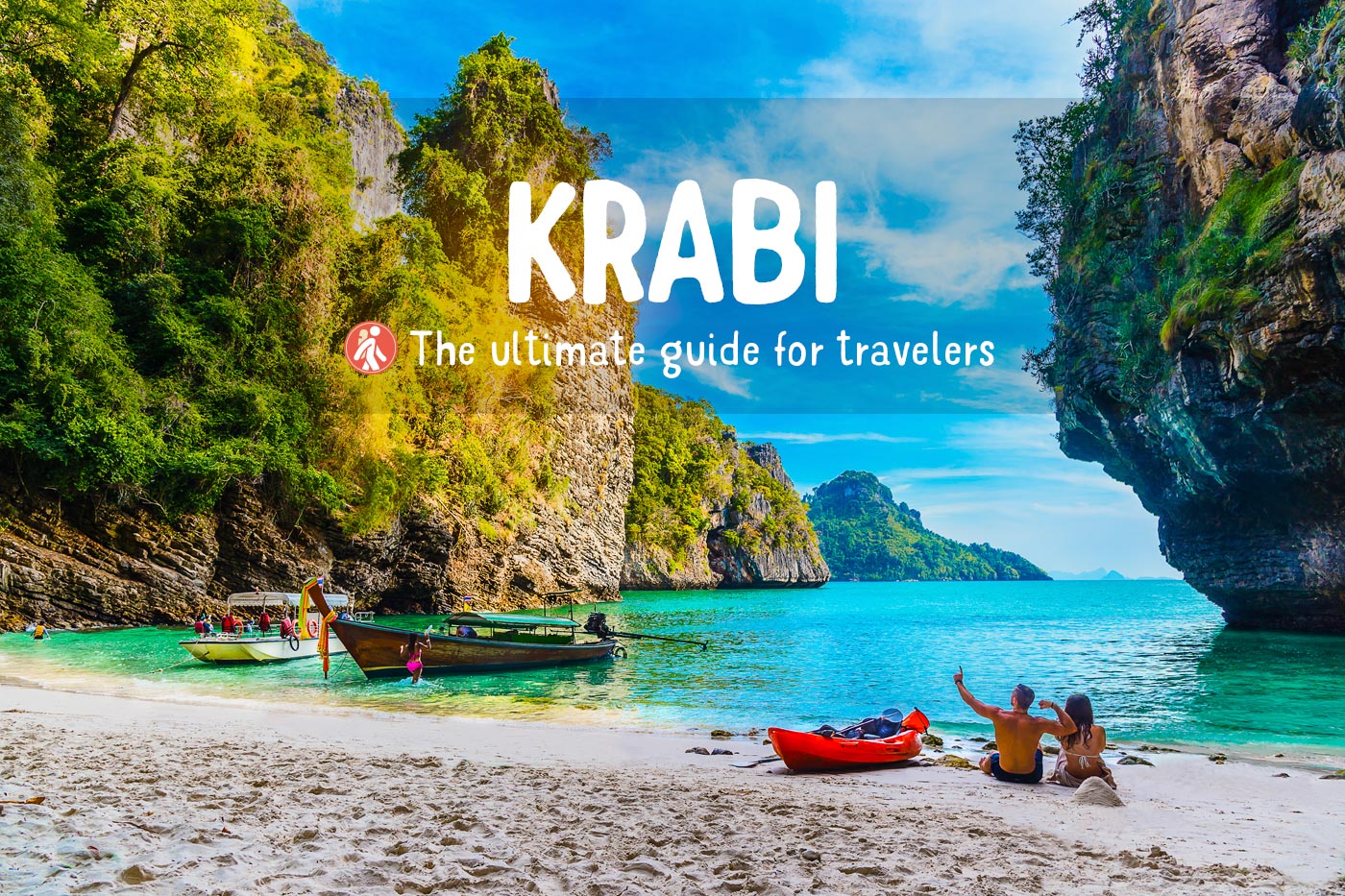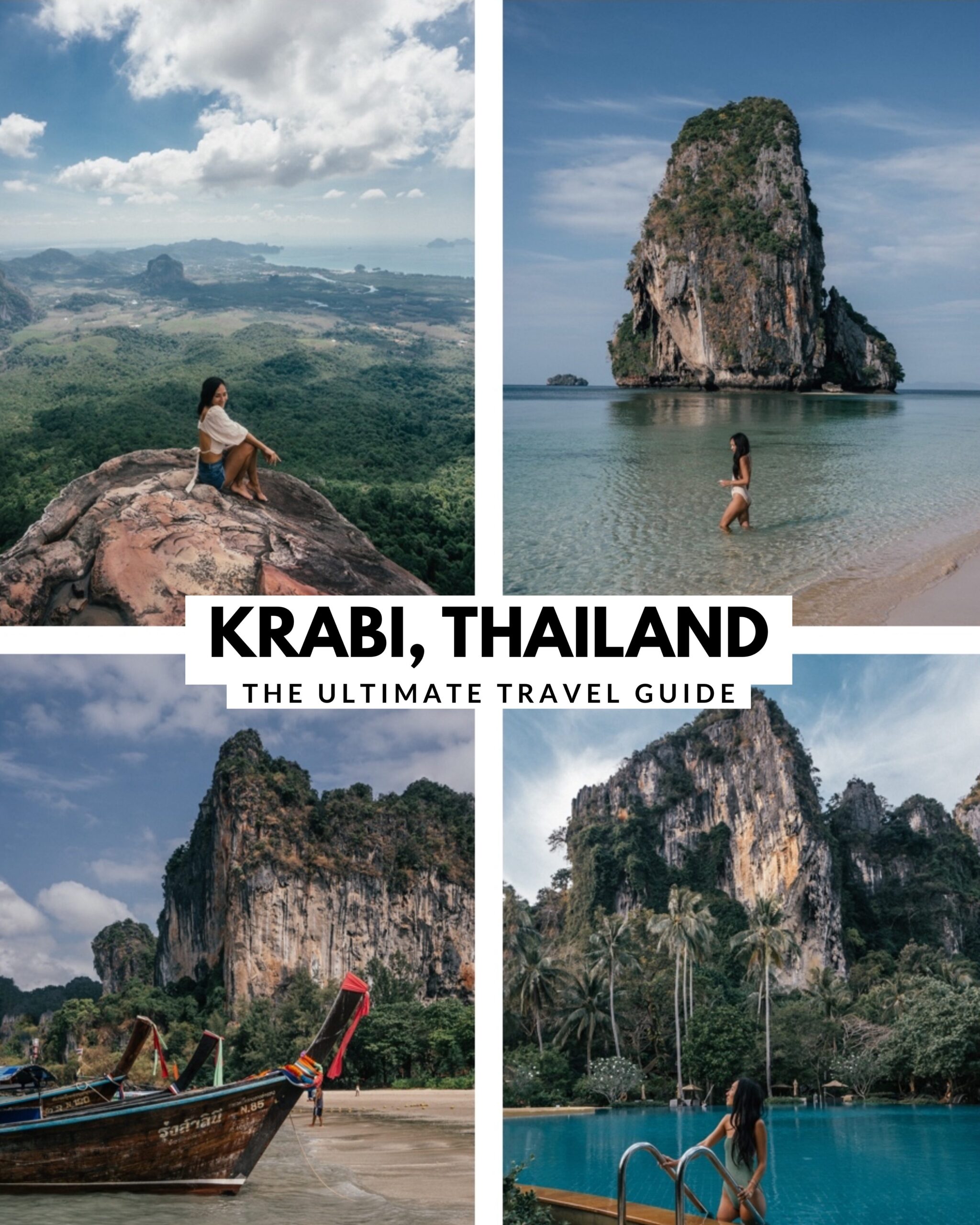
Nestled on Thailand’s Andaman coast, Krabi is a province that epitomizes the postcard-perfect image of Southeast Asia. With its dramatic limestone karsts jutting out of emerald waters, pristine white-sand beaches, lush rainforests, and a laid-back atmosphere, Krabi offers a captivating blend of adventure and relaxation. Far more than just a gateway to the famous Phi Phi Islands, Krabi itself is a destination brimming with natural wonders, cultural richness, and endless possibilities for exploration.
This comprehensive guide will take you through everything you need to know to plan an unforgettable trip to Krabi, from its must-see attractions and fascinating history to practical travel tips, accommodation choices, transportation options, and the best time to visit.
Top Attractions: Krabi’s Must-See Wonders

Related Articles about Krabi: Thailand’s Andaman Jewel – A Comprehensive Travel Guide:
- Unveiling the Hygge: A Traveler’s Guide to Denmark
- The American Tapestry: A Comprehensive Travel Guide to the United States
- Lombok: A Traveler’s Guide to Paradise Found
- Tanzania: An Odyssey into the Heart of Africa
- Russia: A Timeless Tapestry of History, Culture, and Adventure
Krabi’s allure lies in its diverse landscape, offering everything from world-class rock climbing to serene jungle pools.
1. Railay Beach: Accessible only by longtail boat, Railay is a peninsula renowned for its towering limestone cliffs, crystal-clear waters, and a tranquil, car-free environment. It’s a paradise for rock climbers, but also offers stunning beaches like Phra Nang Cave Beach, famous for its fertility shrine and breathtaking scenery, and West Railay, ideal for swimming and sunset views. East Railay is the hub for climbers and offers a mangrove boardwalk and access to viewpoints and the Diamond Cave.
2. Ao Nang: The most developed tourist center in Krabi, Ao Nang serves as the main departure point for island-hopping tours and longtail boats to Railay. While its beach is pleasant, its true value lies in its vibrant atmosphere, diverse restaurants, lively nightlife, and abundant shops. It’s a convenient base for exploring the wider region.
3. Phi Phi Islands: A day trip or overnight stay to the Phi Phi Islands is almost mandatory for first-time visitors to Krabi. Phi Phi Leh is home to the world-famous Maya Bay, immortalized by "The Beach" movie (note: often subject to conservation closures, check status), Viking Cave, and Pileh Lagoon. Phi Phi Don offers vibrant nightlife, viewpoints, and more secluded beaches like Monkey Beach. Expect crowds, but the beauty is undeniable.
4. Hong Islands: Offering a more tranquil alternative to Phi Phi, the Hong Islands archipelago boasts stunning lagoons, hidden coves, and pristine beaches. Kayaking into the mesmerizing Hong Lagoon at low tide is an unforgettable experience. Pak Bia Island and Lading Island are perfect for swimming, snorkeling, and picnicking, often feeling like private paradises.
5. Emerald Pool (Sa Morakot) & Blue Pool: Tucked away in the Thung Teao Forest Natural Park, these natural spring pools offer a refreshing dip amidst a lush rainforest setting. The Emerald Pool glows with a vibrant green hue, while the deeper Blue Pool (a short walk further) is an ethereal azure, though swimming is not permitted here due to its delicate ecosystem. It’s a unique inland escape from the beaches.
6. Hot Springs Waterfall (Namtok Ron Khlong Thom): Located near the Emerald Pool, these natural thermal springs cascade over smooth rocks, forming warm, mineral-rich "bathtubs." The therapeutic waters, heated naturally by volcanic activity, are believed to have healing properties and offer a wonderfully relaxing experience after a day of exploration.
7. Tiger Cave Temple (Wat Tham Suea): For those seeking a spiritual challenge and panoramic rewards, the Tiger Cave Temple offers both. Ascend 1,237 steps to reach the summit, where a golden Buddha statue, a massive bell, and breathtaking 360-degree views of Krabi’s karst landscape and coastline await. The temple complex at the base also features caves, ancient trees, and a revered meditation center.
8. Krabi Town: The provincial capital, Krabi Town offers a glimpse into local Thai life away from the main tourist beaches. Explore its lively Night Market for delicious street food and souvenirs, stroll along the Krabi River, and admire the iconic twin limestone mountains of Khao Khanab Nam that frame the river entrance. It’s a great spot for an authentic Thai experience.

A Glimpse into Krabi’s Past: History and Heritage
Krabi’s history is as rich and layered as its landscape. Archaeological evidence suggests that the region has been continuously inhabited since prehistoric times. Ancient rock paintings, stone tools, and pottery shards found in caves like Tham Phi Hua To and Khao Khanab Nam point to settlements dating back over 35,000 years. This makes Krabi one of Thailand’s oldest continuously inhabited regions.
The name "Krabi" itself is steeped in local lore. One theory suggests it comes from the word "krabi" (กระบี่), meaning "sword," a symbol of the province often depicted on its provincial seal. Another theory links it to "Krabee," a type of tree abundant in the area historically.
In historical records, Krabi was part of the ancient Srivijaya kingdom and later became a satellite town of the Nakhon Si Thammarat kingdom. It was only in 1872, during the reign of King Chulalongkorn (Rama V), that Krabi was officially elevated to a province, consolidating its own administrative identity. For centuries, the local economy was primarily based on fishing, agriculture (especially rubber and palm oil), and tin mining.
The modern era of tourism began to truly blossom in the late 20th century. With its stunning natural beauty, Krabi quickly gained international recognition. The devastating 2004 Indian Ocean Tsunami significantly impacted the region, particularly coastal areas and islands. However, Krabi demonstrated remarkable resilience, rebuilding and recovering, emerging stronger and with a renewed focus on sustainable tourism practices. Today, Krabi stands as a testament to both ancient history and modern development, where diverse cultural influences – Thai, Malay, and Chinese – blend seamlessly.
Essential Travel Tips for Your Krabi Adventure
To ensure a smooth and enjoyable trip, keep these practical tips in mind:
- Visa Requirements: Most Western nationalities can enter Thailand visa-free for 30 or 45 days (check current regulations). For longer stays, apply for a visa in advance.
- Currency: The official currency is the Thai Baht (THB). ATMs are widely available in Ao Nang and Krabi Town. It’s wise to carry some smaller denominations for local markets and longtail boat fees.
- Language: Thai is the official language. While English is widely spoken in tourist areas, learning a few basic Thai phrases (e.g., "Sawasdee krap/ka" for hello, "Khop Khun krap/ka" for thank you) will be appreciated.
- Etiquette: Thailand is a deeply Buddhist country. Dress modestly when visiting temples (shoulders and knees covered). Always remove your shoes before entering temples or someone’s home. The head is considered sacred, and feet are considered low; avoid touching anyone’s head or pointing your feet at people or religious images. The "wai" (a prayer-like gesture) is the traditional greeting.
- Safety: Krabi is generally safe, but exercise common sense. Be wary of scams, especially around tourist hubs. If renting a motorbike, ensure you have an international driving permit and wear a helmet; roads can be challenging. Travel insurance is highly recommended.
- Health: Protect yourself from the sun with high SPF sunscreen, hats, and sunglasses. Stay hydrated. Mosquito repellent is essential, especially during dawn and dusk. Tap water is not safe to drink; stick to bottled water. While street food is delicious, choose vendors with high turnover and visible hygiene.
- Connectivity: Local SIM cards (AIS, TrueMove H, dtac) are affordable and readily available at the airport or convenience stores. Wi-Fi is common in hotels and restaurants.
- Bargaining: It’s customary to bargain in markets and for souvenirs, but not in department stores or most restaurants. Do so politely and with a smile.
- Environmental Awareness: Help preserve Krabi’s natural beauty. Avoid single-use plastics, dispose of trash properly, and do not touch or take anything from coral reefs or natural formations. Support ethical tourism operators.
Accommodation Options: Where to Stay in Krabi
Krabi offers a diverse range of accommodation to suit every budget and travel style.
- Ao Nang: As the main tourist hub, Ao Nang boasts the widest selection of hotels, from luxurious resorts with ocean views to comfortable mid-range hotels and budget-friendly guesthouses and hostels. It’s ideal for families, those seeking convenience, and easy access to restaurants, shops, and tour operators.
- Railay Beach: For a unique and more secluded experience, Railay offers boutique resorts and charming bungalows. West Railay tends to have more upscale options, while East Railay caters to a slightly more budget-conscious crowd and backpackers, though still offering comfortable stays. Staying here means you’re already in paradise, but prices can be higher due to its remote access.
- Krabi Town: If you’re looking for an authentic local experience and budget-friendly options, Krabi Town is a great choice. Accommodation here is generally cheaper, ranging from simple guesthouses to a few mid-range hotels. It’s perfect for exploring the local markets and experiencing Thai culture away from the beach crowds.
- Luxury Resorts: For an indulgent escape, consider resorts like Phulay Bay, a Ritz-Carlton Reserve, or The Tubkaak Krabi Boutique Resort in the quieter Tubkaak Beach area, offering unparalleled service and stunning beachfront settings. Rayavadee on Phra Nang Beach at Railay is another iconic luxury choice.
- Mid-Range Hotels: Many excellent mid-range options provide comfort and amenities without breaking the bank. Look for places like Aonang Villa Resort, Peace Laguna Resort & Spa, or Centara Ao Nang Beach Resort & Spa Krabi, which offer good value, pools, and convenient locations.
- Budget & Backpacker: Hostels and guesthouses are plentiful in Ao Nang and East Railay, offering dormitory beds and private rooms at very affordable prices. These are great for solo travelers and those on a tight budget.
Booking in advance, especially during peak season, is highly recommended to secure your preferred accommodation.
Getting Around: Transportation in Krabi
Navigating Krabi is relatively straightforward, with various options for reaching the province and exploring its wonders.
-
Getting to Krabi:
- Air: Krabi International Airport (KBV) is well-connected with domestic flights from Bangkok (Suvarnabhumi BKK and Don Mueang DMK) and Chiang Mai, as well as international flights from Kuala Lumpur and Singapore.
- Bus: Long-distance buses connect Krabi with major cities like Bangkok, Phuket, and Surat Thani. The bus journey from Bangkok can be long (10-12 hours).
- Train: There’s no direct train to Krabi. You can take a train to Surat Thani, then transfer to a bus or minivan for the final leg to Krabi.
- Ferry/Boat: Regular ferry services operate between Krabi (via Klong Jilad Pier near Krabi Town) and popular islands like Koh Lanta, Phi Phi, and Phuket.
-
Getting Around Krabi:
- Longtail Boats: These iconic wooden boats are the lifeblood of Krabi’s coastal transport. They are essential for island hopping tours, reaching Railay Beach (which is inaccessible by road), and exploring secluded coves. Prices are typically fixed for popular routes or can be negotiated for private charters.
- Songthaews: These shared pick-up trucks with two benches in the back serve as local buses, connecting Krabi Town, Ao Nang, and other nearby areas. They are a cheap and authentic way to get around.
- Tuk-tuks/Motorbike Taxis: Available for shorter distances, especially within Ao Nang or Krabi Town. Always agree on the price before starting your journey.
- Motorbike Rental: Popular for independent exploration, motorbikes offer flexibility. However, roads can be challenging, and accidents are common. An international driving permit is legally required, and helmets are mandatory. Exercise extreme caution.
- Car Rental: Available at Krabi Airport and in Ao Nang. This is a good option if you plan to explore inland attractions like the Emerald Pool and Hot Springs, offering comfort and independence.
- Taxis/Grab: Private taxis are available, and ride-hailing apps like Grab are increasingly popular in Krabi for convenient point-to-point travel.
Best Time to Visit Krabi: Weather & Seasons
Krabi experiences a tropical monsoon climate with three distinct seasons, each offering a different experience.
-
Peak Season (Dry Season): November to March
- Weather: This is Krabi’s "cool" and dry season, with pleasant temperatures (averaging 25-30°C) and minimal rainfall. Skies are generally clear and sunny, and the sea is calm.
- Pros: Ideal weather for all outdoor activities, including island hopping, swimming, snorkeling, diving, and rock climbing.
- Cons: This is the most popular time to visit, meaning larger crowds, higher accommodation prices, and tours booking up quickly. Book everything well in advance.
-
Shoulder Season: April to May & October
- Weather: April and May are the hottest months, with temperatures often exceeding 35°C, accompanied by higher humidity. Occasional afternoon thunderstorms start to appear. October sees the monsoon begin to recede, with improving weather but still some rain.
- Pros: Fewer crowds than peak season, slightly lower prices for flights and accommodation. Still good for most activities, though the heat can be intense in April/May.
- Cons: Can be very hot and humid. Rain can still disrupt plans, especially in October.
-
Low Season (Monsoon Season): June to September
- Weather: Characterized by frequent rainfall, higher humidity, and rougher seas. While it doesn’t rain all day every day, heavy downpours are common.
- Pros: Lush green landscapes, significantly fewer tourists, and the lowest prices for accommodation and some tours. A great time for budget travelers or those seeking tranquility.
- Cons: Rough seas can lead to canceled boat trips to some islands. Some smaller islands or activities might be closed. While diving is still possible, visibility might be reduced.
For most travelers, the dry season (November to March) offers the most reliable and enjoyable weather. However, if you prefer fewer crowds and don’t mind the occasional rain, the shoulder or low season can still offer a rewarding experience at a lower cost.
Conclusion: Your Andaman Dream Awaits
Krabi is more than just a destination; it’s an experience that lingers long after you’ve returned home. From the towering karsts of Railay to the serene beauty of its hidden lagoons, the province offers a breathtaking backdrop for adventure, relaxation, and cultural immersion. Whether you’re scaling limestone cliffs, snorkeling in crystal-clear waters, exploring ancient temples, or simply savouring delicious Thai cuisine, Krabi promises a diverse and unforgettable journey. With its rich history, warm hospitality, and unparalleled natural beauty, Krabi truly stands as Thailand’s Andaman jewel, beckoning you to discover its magic. Start planning your Krabi adventure today – your slice of tropical paradise awaits.





